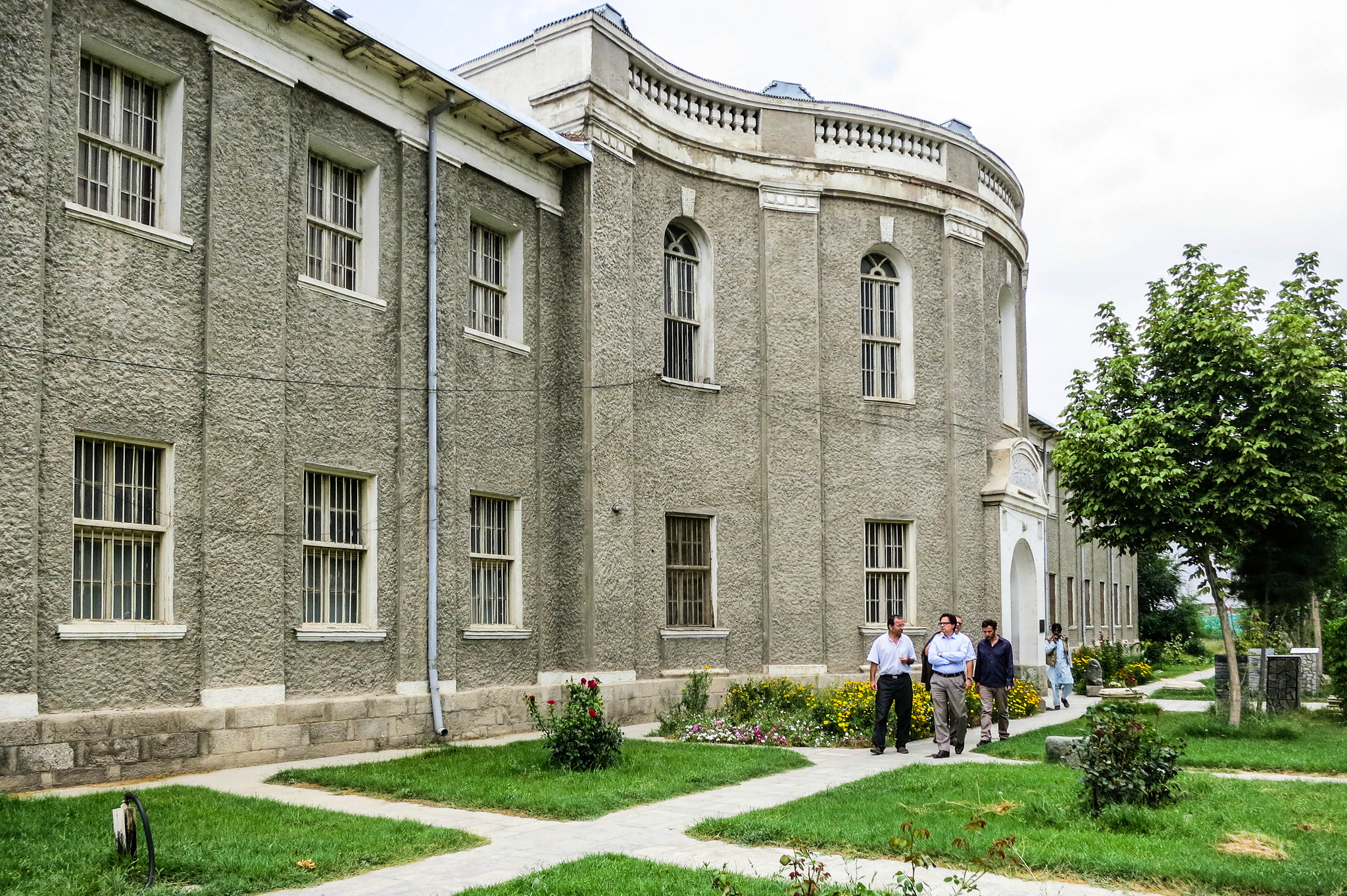Located in Afghanistan’s capital, Kabul, the National Museum of Afghanistan was established in 1919. Originally housed in Bagh-i-Bala Palace, the museum housed weapons, miniatures, manuscripts, and works of art belonging to the Afghan royal families.
In this article, we look at the history of the museum, its collections, and the important artefacts housed there.
The original Afghan National Museum opened during the reign of King Amanullah Khan.
Originally known as a “Cabinet of Curiosities,” the collection was moved to its present location in 1931. In 1964, historian Nancy Dupree cowrote A Guide to the Kabul Museum.
During the 1990s, the site served as a military base. Curators sealed items in metal boxes and removed them for safekeeping, storing many artefacts in vaults throughout Kabul, while others were looted and found as far afield as Europe.
Between 2003 and 2006, the museum carried out extensive structural refurbishments, at a cost of around $350,000. Museum officials recovered precious objects, adding them to inventories and placing them back on display.
Since 2007, Interpol and UNESCO have helped recover more than 8,000 artefacts belonging to the National Museum of Afghanistan. In July 2012, the British Museum returned 843 artefacts, including the priceless first-century Begram Ivories.
The Begram Ivories consist of more than a thousand figures and plaques.
Dating back to the first and second centuries CE, these ivory and bone carvings are widely regarded as some of the finest examples of Kushan art. Rediscovered in the 1930s in Bagram, Afghanistan, these carved panels were likely originally attached to wooden furniture.
The carvings attest to the cosmopolitan tastes of the local elite, the skills and sophistication of local craftsmen, and the prolific ancient trade in luxury goods.
The ancient city of Kapisi, located near modern Bagram, formed the capital of the Kushan Empire, an ancient civilization that spanned northwest India to northern Afghanistan. Dominating two passes of the Hindu Kush mountains, Kapisi was a strategically important city. Early Kushans are well known for their arts, producing sculptures, paintings, and friezes between the first and fourth centuries CE.
The Begram Ivories include intricate, decorative plaques that depict male and female courtiers, musicians, and dancers. They also feature mythological creatures, such as griffins, as well as elephants, lions, birds, flowers, and architectural backdrops. Color pigments recovered during analysis reveal they were originally painted red, black, blue, and indigo.
The Bactria Exhibition
The historic region of Bactria in Central Asia encompassed what is now Afghanistan, Tajikistan, and Uzbekistan. It was home to a number of civilizations over the millennia, including the Persian Achaemenid Empire, the Greek Seleucid Empire, and the Greco-Bactrian Empire. Bactria was famous for its wealth, thousand cities, and the outstanding fertility of its lands.
Balkh, Bactria’s capital, formed the cultural and political center of the Aspa, Cyanides, and Pishdadian dynasties. Balkh was an important trade center, effectively serving as a crossroads between Western and Eastern cultures throughout the Achaemenid period and later.
Both Buddhism and Zoroastrianism were practiced in Bactria until the sacred religion of Islam began to flourish throughout the region and the majority of the population became Muslim.
Over the course of the last century, archaeological sites across the region have yielded precious artefacts, many of which are exhibited by the museum today, including examples from the Stone Age and Bronze Age as well as the Aryan, Achaemenid, Greco-Bactrian Scythian, and Kushan periods.
The museum features displays of Paleolithic and Mesolithic tools, as well as intricate examples of Bronze Age jewelry inlaid with lapis lazuli. There are also pieces dating back to Alexander the Great’s expedition across the region, with ivory pieces serving as important examples of Hellenistic (Greek) art.
The Ghazni Exhibition
The word Ghazni comes from the Persian word for jewel.
In 2013, Ghazni was named the Islamic Capital of Culture by the Islamic Educational, Scientific, and Cultural Organization (ISESCO). Situated 150 kilometers southwest of Kabul, Ghazni formed the center of the province of Arakuzia in ancient times. Once the Islamic empire’s largest city, the city lies on the road between Kabul and Kandahar.
The National Museum of Afghanistan houses an extensive collection of marble stones recovered from Ghazni over the last decade, dating back to the 11th century CE.
UNESCO has supported the museum in its refurbishment program.
Working together with UNESCO, as well as a host of other cultural development organizations, the museum has rehabilitated its buildings and grounds, invested in its staff, and revamped displays of its priceless collections.
The museum has also implemented advocacy, project design, and funding and awareness strategies, making a great deal of progress over the last few years. As a result, the National Museum of Afghanistan has established a global reputation as one of the finest collections of Afghan and Central Asian art and archaeology

